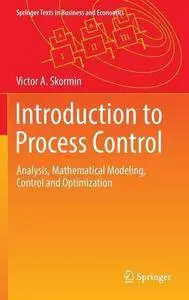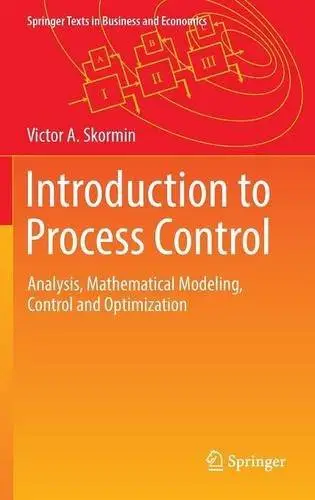Introduction to Process Control: Analysis, Mathematical Modeling, Control and Optimization
Springer | Business & Economics | Nov. 20 2016 | ISBN-10: 331942257X | 254 pages | pdf | 7.89 mb
Springer | Business & Economics | Nov. 20 2016 | ISBN-10: 331942257X | 254 pages | pdf | 7.89 mb
Authors: Skormin, Victor A.
Suitable for graduate-level courses on any manufacturing process
Author is a prominent teacher/researcher/consultant in the field
Includes end-of-chapter problems
This textbook is intended for an introductory graduate level on process control, taught in most engineering curricula. It focuses on the statistical techniques and methods of control and system optimization needed for the mathematical modeling, analysis, simulation, control and optimization of multivariable manufacturing processes. In four sections, it covers:
Relevant mathematical methods, including random events, variables and processes, and their characteristics; estimation and confidence intervals; Bayes applications; correlation and regression analysis; statistical cluster analysis; and singular value decomposition for classification applications.
Mathematical description of manufacturing processes, including static and dynamic models; model validation; confidence intervals for model parameters; principal component analysis; conventional and recursive least squares procedures; nonlinear least squares; and continuous-time, discrete-time, s-domain and Z-domain models.
Control of manufacturing processes, including transfer function/transfer matrix models; state-variable models; methods of discrete-time classical control; state variable discrete-time control; state observers/estimators in control systems; methods of decoupling control; and methods of adaptive control.
Methods and applications of system optimization, including unconstrained and constrained optimization; analytical and numerical optimization procedures; use of penalty functions; methods of linear programming; gradient methods; direct search methods; genetic optimization; methods and applications of dynamic programming; and applications to estimation, design, control, and planning.
Each section of the book will include end-of-chapter exercises, and the book will be suitable for any systems, electrical, chemical, or industrial engineering program, as it focuses on the processes themselves, and not on the product being manufactured. Students will be able to obtain a mathematical model of any manufacturing process, to design a computer-based control system for a particular continuous manufacturing process, and be able to formulate an engineering problem in terms of optimization, as well as the ability to choose and apply the appropriate optimization technique.
Number of Pages
XVII, 254
Number of Illustrations and Tables
56 b/w illustrations, 50 illustrations in colour
Topics
Operation Research/Decision Theory
Business Process Management
Industrial and Production Engineering
Click Here for More books



